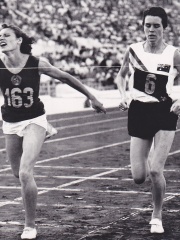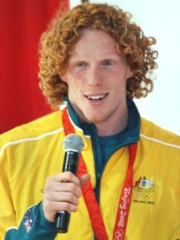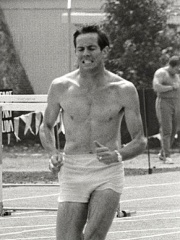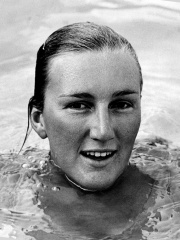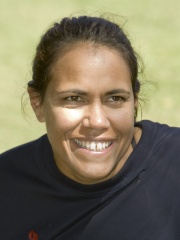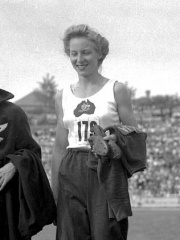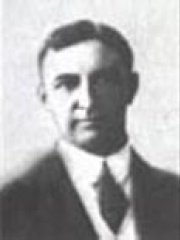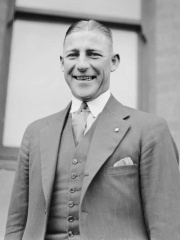
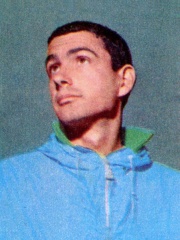
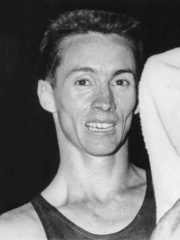
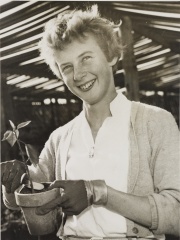


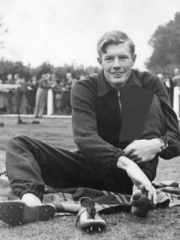

The Most Famous
ATHLETES from Australia
Top 10
The following people are considered by Pantheon to be the top 10 most legendary Australian Athletes of all time. This list of famous Australian Athletes is sorted by HPI (Historical Popularity Index), a metric that aggregates information on a biography's online popularity. Visit the rankings page to view the entire list of Australian Athletes.

1. Bobby Pearce (1905 - 1976)
With an HPI of 61.10, Bobby Pearce is the most famous Australian Athlete. His biography has been translated into 21 different languages on wikipedia.
Henry Robert Pearce (30 September 1905 – 20 May 1976) was an Australian three-time world champion sculler of the 1920s and 1930s. He won consecutive Olympic gold medals in the single sculls at the 1928 Summer Olympics in Amsterdam and the 1932 Summer Olympics in Los Angeles. He won the World Sculling Championship in 1933, and twice successfully defended that title in 1934 and 1938. He was a three-time Australian national champion and won the Diamond Sculls at the 1931 Henley Royal Regatta.

2. Ron Clarke (1937 - 2015)
With an HPI of 59.49, Ron Clarke is the 2nd most famous Australian Athlete. His biography has been translated into 27 different languages.
Ronald William Clarke, AO, MBE (21 February 1937 – 17 June 2015) was an Australian athlete, writer, and the Mayor of the Gold Coast from 2004 to 2012. He was one of the best-known middle- and long-distance runners in the 1960s, notable for setting seventeen world records.

3. Al Lawrence (1930 - 2017)
With an HPI of 59.24, Al Lawrence is the 3rd most famous Australian Athlete. His biography has been translated into 18 different languages.
Allan Cleave Evan Lawrence (9 July 1930 – 15 May 2017) was an Australian long-distance runner. He won a bronze medal for Australia in the 1956 Summer Olympics. Lawrence was born in the Sydney suburb of Punchbowl. He competed for Australia in the 1956 Summer Olympics held in Melbourne, Australia in the 10,000 metres where he won the bronze medal, clocking 28:53 (nearly 30 seconds faster than he had ever run before). He also qualified for the 5,000 metre final, but did not compete due to a strained leg muscle. Two years later, he came to the University of Houston to run for the Cougars. In 1959–60, he captured consecutive NCAA cross-country titles and followed each with an AAU XC win. In 1960, he set a world indoor two-mile record with 8:46. Six days later, he won the AAU three-mile with another world record of 13:26. He was the only male runner to win both the NCAA and AAU Cross Country individual championship in the same year until 1992 (Bob Kennedy). At the 1960 Olympic games in Rome, he placed fourth in the 5,000 metre heats, did not finish the 10,000 metres and placed a disappointing 54th in the marathon in 2:37. During his career, he broke over 10 Australian records from 2 miles to 10,000m and was the first Australian to break 14 minutes for 5000m and 30 and 29 minutes for 10,000m. Lawrence returned to America where he became an American citizen in the early 1980s. He formed the Al Lawrence Running Club in Houston, which remains strong today. He co-authored 3 books with Mark Scheid, "The Self-Coached Runner", "The Self-Coached Runner II", "Running and Racing after 35" and an Autobiography "To Olympus and Beyond" (A Story of Life, Sport, and Love on Four Continents)

4. Betty Cuthbert (1938 - 2017)
With an HPI of 58.95, Betty Cuthbert is the 4th most famous Australian Athlete. Her biography has been translated into 36 different languages.
Elizabeth Alyse Cuthbert (20 April 1938 – 6 August 2017), was an Australian athlete and a four-time Olympic champion. She was nicknamed Australia's "Golden Girl". During her career, she set world records for 60 metres, 100 yards, 200 metres, 220 yards and 440 yards. Cuthbert also contributed to Australian relay teams completing a win in the 4 × 100 metres, 4 × 110 yards, 4 × 200 metres and 4 × 220 yards. Cuthbert had a distinctive running style, with a high knee lift and mouth wide open. She was named in 1998 an Australian National Treasure and was inducted as a Legend in the Sport Australia Hall of Fame in 1994 and the Athletics Australia Hall of Fame in 2000.
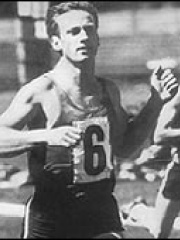
5. Peter Norman (1942 - 2006)
With an HPI of 58.75, Peter Norman is the 5th most famous Australian Athlete. His biography has been translated into 34 different languages.
Peter George Norman (15 June 1942 – 3 October 2006) was an Australian track athlete. He won the silver medal in the 200 metres at the 1968 Summer Olympics in Mexico City, with a time of 20.06 seconds, which remained the Oceania 200 m record for more than 56 years. He was a five-time national 200-metre champion. Norman was one of the three athletes in the 1968 Olympics protest salute photograph taken during the medal ceremony for the 200-metre event. He knew the salute was to occur and wore a badge of the Olympic Project for Human Rights in support of fellow athletes John Carlos and Tommie Smith.

6. George Parker (1896 - 1976)
With an HPI of 58.43, George Parker is the 6th most famous Australian Athlete. His biography has been translated into 19 different languages.
George R. Parker (19 November 1897 – 18 June 1974) was an Australian athlete who competed mainly in racewalking. He competed for Australia in the 1920 Summer Olympics held in Antwerp, Belgium in the 3000 metre walk where he won the silver medal.

7. Gordon George Avery (1925 - 2006)
With an HPI of 58.25, Gordon George Avery is the 7th most famous Australian Athlete. His biography has been translated into 18 different languages.
Gordon George Avery, known as George Avery, (11 February 1925 – 22 September 2006) was an Australian athlete who mainly competed in the men's triple jump event and competed at the 1948 Summer Olympics.

8. John Winter (1924 - 2007)
With an HPI of 57.81, John Winter is the 8th most famous Australian Athlete. His biography has been translated into 21 different languages.
John Arthur "Jack" Winter (3 December 1924 – 5 December 2007) was an Australian high jumper who won that event at the 1948 Summer Olympics in London with a jump of 1.98 metres (6 ft. 6 in.). A 23-year-old bank teller, Winter is Australia's only Olympic high jump gold medalist.

9. William Jones (b. 0)
With an HPI of 57.56, William Jones is the 9th most famous Australian Athlete. Their biography has been translated into 22 different languages.
William Jones may refer to:

10. Norma Croker (1934 - 2019)
With an HPI of 57.03, Norma Croker is the 10th most famous Australian Athlete. Her biography has been translated into 23 different languages.
Norma Croker Fleming (11 September 1934 – 21 August 2019) was an Australian sprinter. Croker was educated at Brisbane State High School. At the 1956 Summer Olympics in Melbourne, Australia, she placed 4th in the individual 200 metres race, but won the gold medal in 4 × 100 metres relay, together with Shirley Strickland, Fleur Mellor and Betty Cuthbert. At the 1960 Summer Olympics she was a member of the Australian relay team which was disqualified in the heats and also finished 15th in the long jump. Croker was the first Olympic gold medal winner to hail from the Australian state of Queensland.< In the 1956 Australian championships she placed 4th in 100 yards and 3rd in 220 yards. In 1960 she placed 6th in 100 yards, 3rd in 220 yards, 3rd in long jump and 4th in 4 × 100 m relay. In 2009 Croker was inducted into the Queensland Sport Hall of Fame.
People
Pantheon has 423 people classified as Australian athletes born between 1876 and 2010. Of these 423, 394 (93.14%) of them are still alive today. The most famous living Australian athletes include William Jones, Brenda Jones, and Fleur Mellor. The most famous deceased Australian athletes include Bobby Pearce, Ron Clarke, and Al Lawrence. As of April 2024, 61 new Australian athletes have been added to Pantheon including Susan Lee, Patrick Johnson, and Ian Edmunds.
Living Australian Athletes
Go to all RankingsWilliam Jones
HPI: 57.56
Brenda Jones
1936 - Present
HPI: 55.67
Fleur Mellor
1936 - Present
HPI: 54.04
Marlene Mathews
1934 - Present
HPI: 53.74
Steve Hooker
1982 - Present
HPI: 53.69
Ralph Doubell
1945 - Present
HPI: 53.05
Jenny Lamy
1949 - Present
HPI: 52.13
Lorraine Crapp
1938 - Present
HPI: 51.68
Colt Walker
HPI: 51.61
Pam Kilborn
1939 - Present
HPI: 51.58
Marilyn Black
1944 - Present
HPI: 51.45
Cathy Freeman
1973 - Present
HPI: 51.34
Deceased Australian Athletes
Go to all RankingsBobby Pearce
1905 - 1976
HPI: 61.10
Ron Clarke
1937 - 2015
HPI: 59.49
Al Lawrence
1930 - 2017
HPI: 59.24
Betty Cuthbert
1938 - 2017
HPI: 58.95
Peter Norman
1942 - 2006
HPI: 58.75
George Parker
1896 - 1976
HPI: 58.43
Gordon George Avery
1925 - 2006
HPI: 58.25
John Winter
1924 - 2007
HPI: 57.81
Norma Croker
1934 - 2019
HPI: 57.03
Shirley Strickland
1925 - 2004
HPI: 57.03
Stan Rowley
1876 - 1924
HPI: 57.02
Bill Bruce
1923 - 2002
HPI: 56.80
Newly Added Australian Athletes (2025)
Go to all RankingsSusan Lee
1966 - Present
HPI: 44.38
Patrick Johnson
1972 - Present
HPI: 43.85
Ian Edmunds
1961 - Present
HPI: 43.09
Stephen Hawkins
1971 - Present
HPI: 42.44
Megan Marcks
1972 - Present
HPI: 42.17
Robyn Grey-Gardner
1964 - Present
HPI: 41.20
Danielle Woodward
1965 - Present
HPI: 40.73
Susan Chapman
1962 - Present
HPI: 40.51
Debbie Watson
1965 - Present
HPI: 40.47
Melissa Byram
1973 - Present
HPI: 40.35
Kate Slatter
1971 - Present
HPI: 39.20
Kerry Saxby-Junna
1961 - Present
HPI: 38.99
Overlapping Lives
Which Athletes were alive at the same time? This visualization shows the lifespans of the 25 most globally memorable Athletes since 1700.

